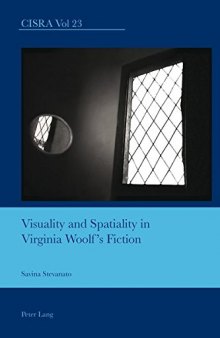 جزییات کتاب
جزییات کتاب
This book offers an interpretative key to Virginia Woolf’s visual and spatial strategies by investigating their nature, role and function. The author examines long-debated theoretical and critical issues with their philosophical implications, as well as Woolf’s commitment to contemporary aesthetic theories and practices. The analytical core of the book is introduced by a historical survey of the interart relationship and significant critical theories, with a focus on the context of Modernism. The author makes use of three investigative tools: descriptive visuality, the widely debated notion of spatial form, and cognitive visuality. The cognitive and remedial value of Woolf’s visual and spatial strategies is demonstrated through an inter-textual analysis of To the Lighthouse, The Waves and Between the Acts (with cross-references to Woolf’s short stories and Jacob’s Room). The development of Woolf’s literary output is read in the light of a quest for unity, a formal attempt to restore parts to wholeness and to rescue Being from Nothingness.



 دانلود کتاب
دانلود کتاب

 جزییات کتاب
جزییات کتاب





 این کتاب رو مطالعه کردید؟ نظر شما چیست؟
این کتاب رو مطالعه کردید؟ نظر شما چیست؟
